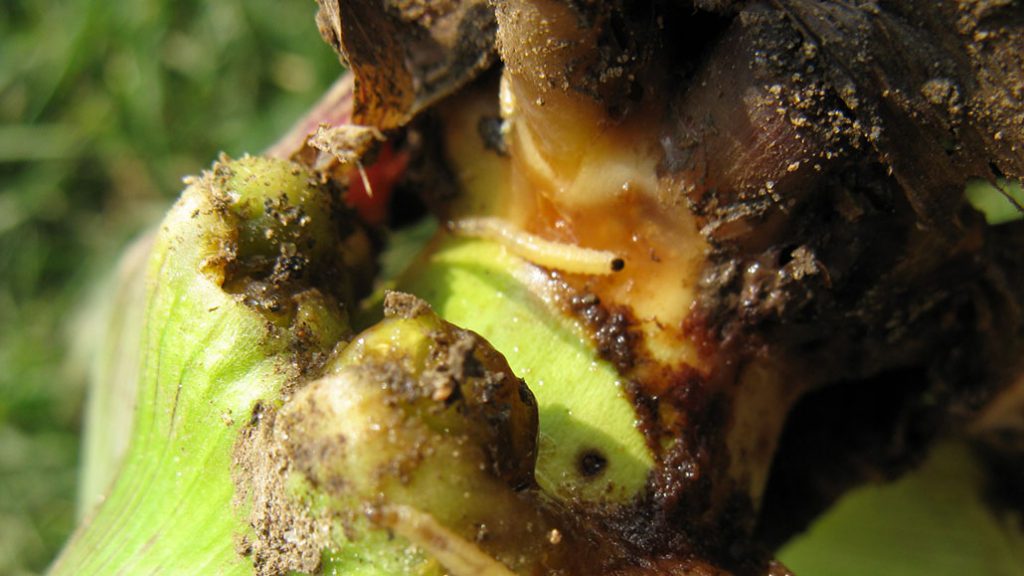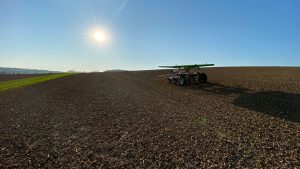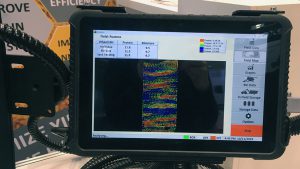Bt resistant corn root worm
FARMERS SHOULD ACT NOW

HERE IS YOUR Bt resistant corn root worm (CRW) wake up call. This tiny little worm can wreak havoc on your corn, but it can be managed.
The simplest management solution is not to plant continuous corn on corn for years in a row. However, even if you are rotating your crops, you still need to mitigate the risks for Bt resistant corn root worm.
Bt crops have helped Ontario farmers manage insect pests for more than two decades. However, the development of resistance to these Bt corn hybrids is beginning to be seen in the U.S. and parts of Ontario, including Huron and Perth counties.
Resistance can be mitigated by practicing Integrated Pest Management (IPM).
“It is a matter of putting the effort in, in the next few years, and doing the best we can to try and add some more years to the rootworm hybrids because no new traits are coming down the pipeline to save us. What we have is what we need to maintain,” says Tracey Baute, field crop entomologist with the Ontario Ministry of Agriculture, Food and Rural Affairs.
Rootworm larvae feed below ground on corn roots from late May until late July. The larvae hatch from eggs laid in the previous growing season. Meaning that, even if you have volunteer corn, you need to be careful. After pupating, adult beetles emerge as early as late May until the end of August. It is recommended that you scout often. The affected roots will appear pruned and ragged. Corn plants may lodge at ground level due to pruned roots; this is often called goose-necking.
When the larvae turn into adults, they create clipped silks during feeding, which may reduce pollination. However, once pollination is complete, silk feeding is not a threat. Some adults may also feed on leaf tissue which could leave window-paned strips parallel with the leaf veins. Leaf feeding rarely causes economic injury.
SCOUTING
Baute is encouraging continuous corn growers to scout high-risk fields this fall to determine their best management practices for next year. High risk fields include:
- Continuous corn production and repeated use of Bt corn rootworm hybrids — continuous corn planting can promote higher populations of CRW. Fields or areas with a long history of corn after corn production and/or repeated use of Bt rootworm hybrids are at high risk of resistance development.
- High adult CRW populations — fields with high numbers of CRW adults observed the previous year and where a lot of egg laying likely occurred.
- Fields with lodging or goosenecking — because lodging/goosenecking often occurs in fields with high rootworm pressure, root digs are needed to determine if root injury was the result of larval CRW feeding or other factors (such as high winds).
Baute has posted additional tips for scouting at www.fieldcropnews.com.
“We want to make sure that growers understand that we cannot just switch to another trait right now, all the traits are showing potential cross resistance,” says Baute.
If you are concerned you may have an issue with CRW in your corn field, farmers are encouraged to contact Baute (tracey.baute@ontario.ca), or their local agronomist.
Paige Miller is a communications coordinator for Grain Farmers of Ontario. •


























